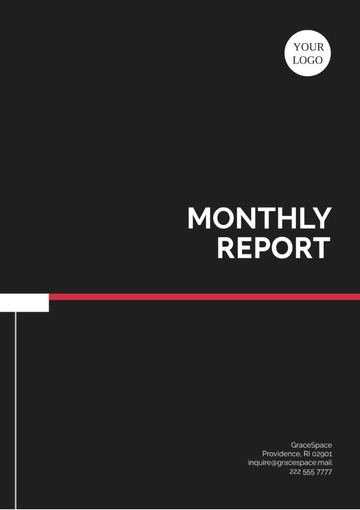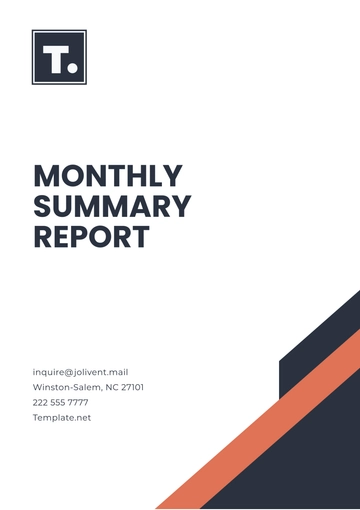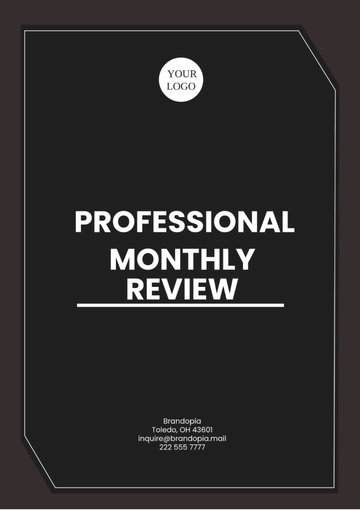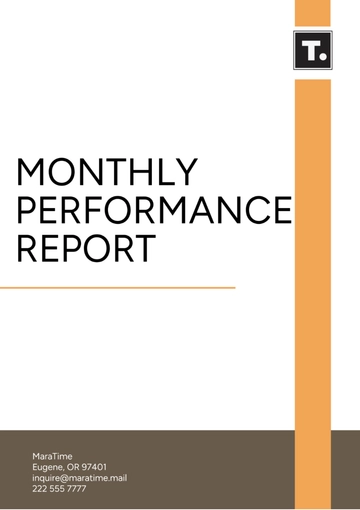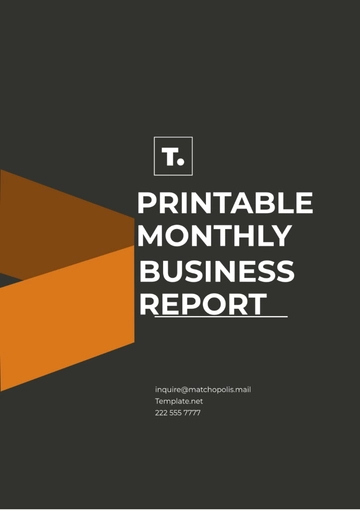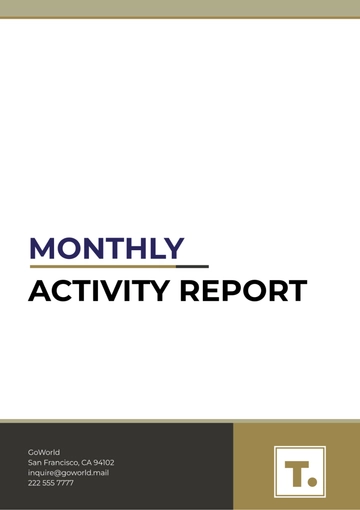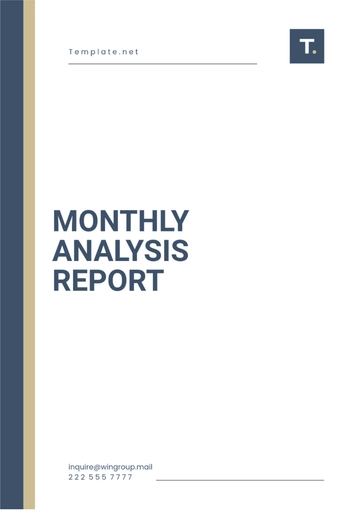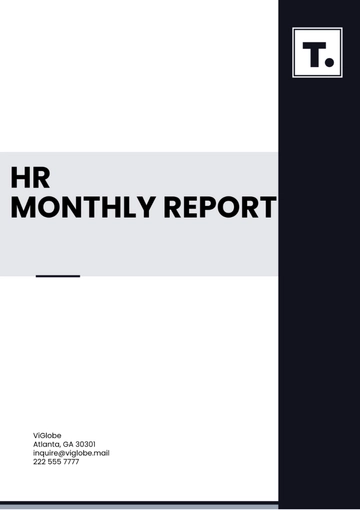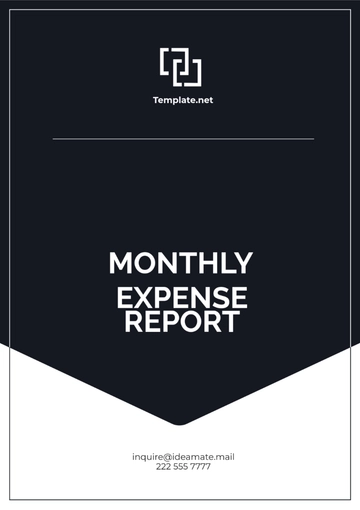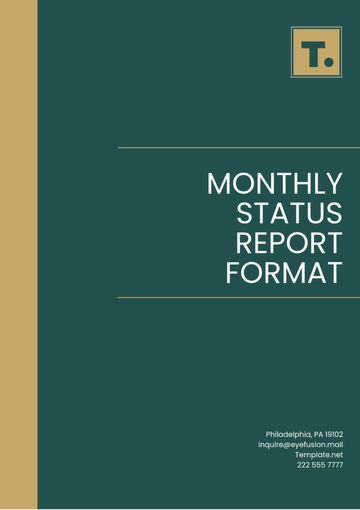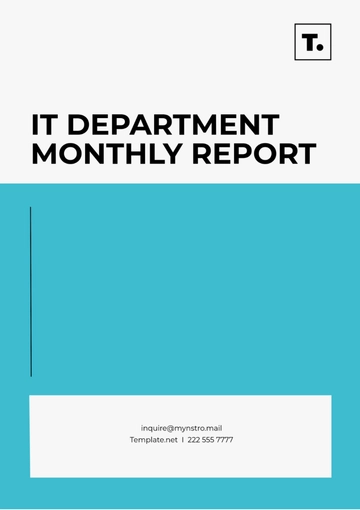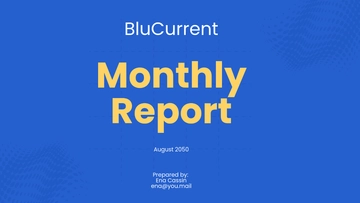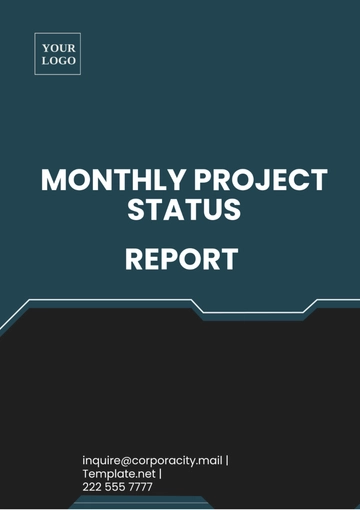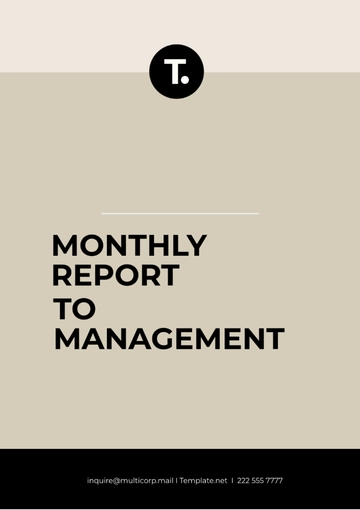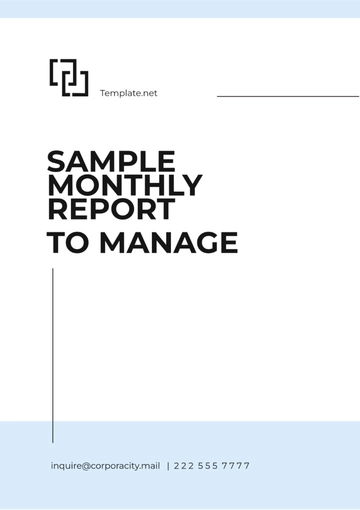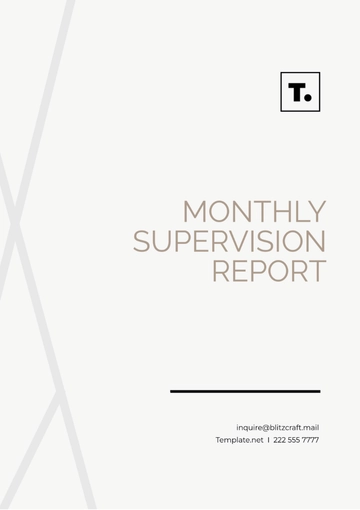Free Logistics Company Monthly Report
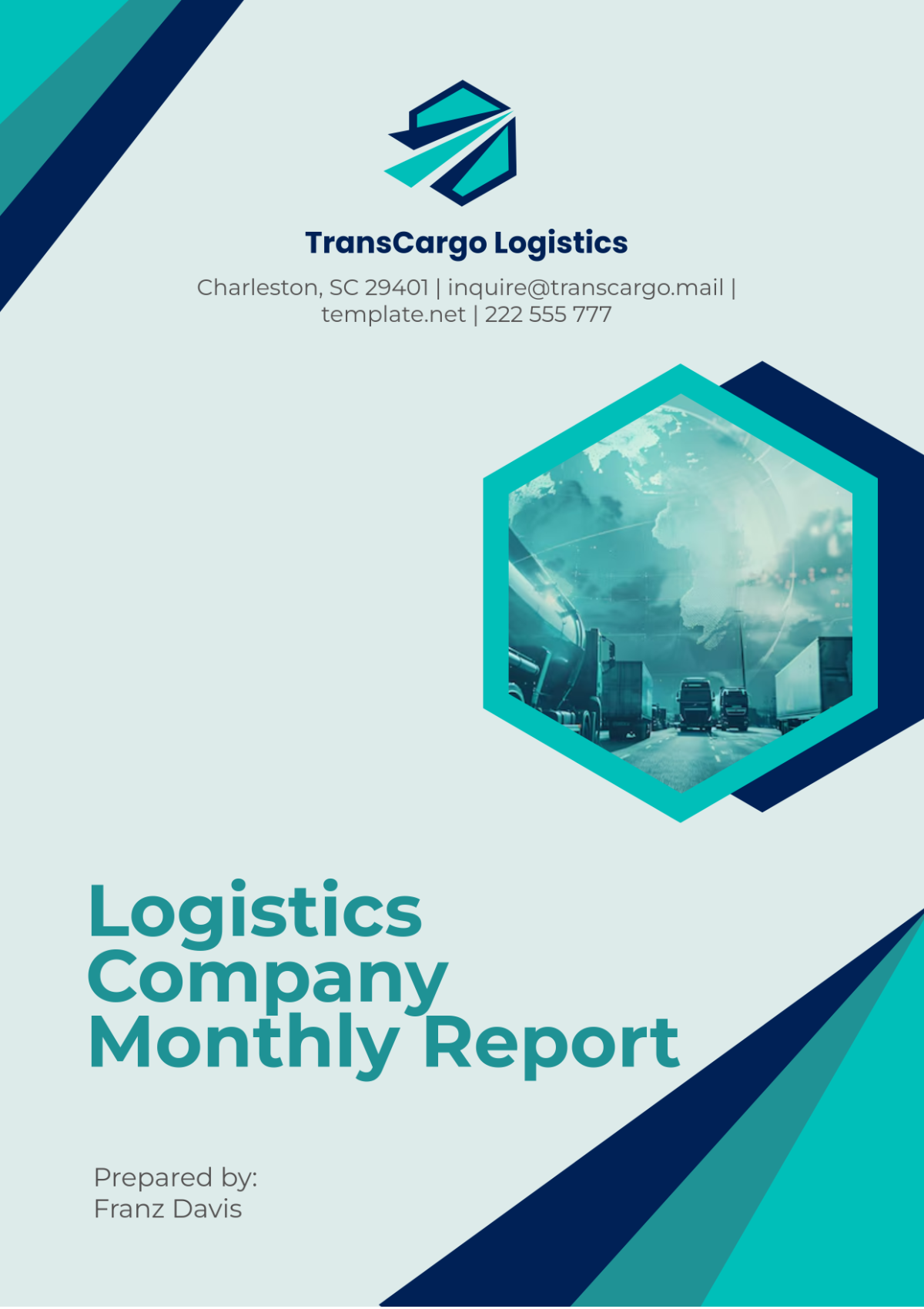
Date: October 2050
Prepared by: [Your Company Name] Logistics Team
1. Executive Summary
The month of October 2050 marked a pivotal period for [Your Company Name], demonstrating our resilience and adaptability in an increasingly competitive logistics landscape. We witnessed significant growth across our operations, driven by strategic partnerships, an expanded customer base, and the successful implementation of technology-driven solutions. Notably, there was a remarkable [15%] increase in total shipments compared to October 2049, which reflects our enhanced operational capabilities and our commitment to meeting customer demands.
Moreover, our efforts to optimize delivery efficiency have yielded a [10%] reduction in average delivery times. This improvement is attributed to several factors, including better route planning, advanced logistics software, and the ongoing training of our logistics personnel. Strong financial performance was also a highlight this month, fueled by new strategic contracts that have broadened our service offerings. This report aims to provide a comprehensive analysis of our operational metrics, financial health, and strategic initiatives, highlighting both our achievements and the areas where we can improve as we move forward into the final quarter of 2050.
2. Financial Performance
The financial performance of [Your Company Name] in October 2050 showcases our robust growth trajectory and reflects our ability to capitalize on emerging opportunities within the logistics sector. Our revenues have seen substantial increases across key areas, underlining the effectiveness of our business strategies and operational enhancements.
2.1 Revenue Summary
Category | October 2050 ($) | October 2051 ($) | Year-Over-Year Growth (%) |
|---|---|---|---|
Domestic Freight Services | [1,500,000] | [1,200,000] | [25%] |
International Freight Services | [2,100,000] | [1,750,000] | [20%] |
Warehousing & Storage | [900,000] | [850,000] | [6%] |
Total Revenue | [4,500,000] | [3,800,000] | [18%] |
Key Observations:
The growth in Domestic Freight Services can be attributed to an expanded customer base and improved rates on high-demand routes, particularly those involving e-commerce deliveries. As consumers increasingly rely on online shopping, our strategic positioning has allowed us to capture a larger market share.
International Freight Services have shown robust performance, aided by a surge in shipment volumes to new regions in the Asia-Pacific. This growth has also been supported by our recent investments in technology that enhance tracking and transparency for our clients, thereby building trust and improving customer satisfaction.
Our Warehousing & Storage segment saw a modest increase, primarily due to new partnerships with e-commerce platforms that require extended storage solutions. This aligns with our strategic goal of providing comprehensive logistics solutions that integrate warehousing with transportation.
2.2 Expense Summary
Expense Category | October 2050 ($) | October 2051 ($) | Year-Over-Year Change (%) |
|---|---|---|---|
Transportation | [1,200,000] | [1,100,000] | [9%] |
Labor & Wages | [750,000] | [680,000] | [10%] |
Fuel | [400,000] | [370,000] | [8%] |
Facility Maintenance | [100,000] | [90,000] | [11%] |
Total Expenses | [2,450,000] | [2,240,000] | [9%] |
Key Observations:
The increase in Transportation costs can be attributed to expanded fleet utilization, particularly for new contracts in emerging markets. The growth in demand has necessitated a more extensive deployment of our transportation resources, which, while increasing costs, also enhances our service capacity.
Labor & Wages have seen an increase as we have brought on additional staff to meet the growing demand for our services. This investment in human resources is critical as it enables us to maintain our service standards while scaling our operations effectively.
The rise in Fuel costs, although modest at [8%], reflects the ongoing volatility in global oil prices. Additionally, as we expand our routes and services, we are closely monitoring fuel consumption to ensure operational efficiency and to mitigate future cost increases.
3. Operations Overview
The operations segment of our report delves into the specifics of our freight volume, distribution efficiencies, and service quality metrics. Our ability to adapt to market demands and optimize our operations has played a significant role in our success this month.
3.1 Freight Volume and Distribution
Freight Type | October 2050 (Units) | October 2051 (Units) | Year-Over-Year Change (%) |
|---|---|---|---|
Domestic Shipments | [25,000] | [22,000] | [13%] |
International Shipments | [30,000] | [26,000] | [15%] |
Express Deliveries | [5,000] | [4,500] | [11%] |
Total Shipments | [60,000] | [52,500] | [14%] |
Highlights:
The [13%] growth in Domestic Shipments indicates a robust demand for logistics services within metropolitan areas, driven by increased e-commerce activity and consumer purchasing trends. Our strategic marketing initiatives and enhanced service offerings have allowed us to effectively meet this demand.
International Shipments also observed a substantial increase, reflecting our successful expansion into new markets. The introduction of additional shipping routes and partnerships with international carriers has enabled us to improve our service portfolio.
Our Express Deliveries recorded significant demand in high-priority sectors, such as pharmaceuticals and electronics. With a [5%] increase in average delivery speed, we are setting new benchmarks in service excellence for our customers.
3.2 Delivery Times and Service Quality
Service Level | Average Delivery Time (Days) | October 2050 (%) | October 2051 (%) |
|---|---|---|---|
On-Time Delivery (Domestic) | [1.8] | [95%] | [92%] |
On-Time Delivery (International) | [4.3] | [93%] | [89%] |
Express Delivery | [0.9] | [98%] | [97%] |
Observations:
Our On-Time Delivery (Domestic) performance of [95%] is indicative of our commitment to customer satisfaction. This improvement is a result of optimized route planning and a well-maintained fleet that can respond quickly to logistical challenges.
The On-Time Delivery (International) rate also improved significantly, reaching [93%], thanks to streamlined customs processes and enhanced tracking technologies that provide our clients with real-time updates on their shipments.
The efficiency of our Express Delivery service, maintaining an impressive average of [0.9 days], reinforces our reputation as a leader in time-sensitive deliveries. Continuous investment in training our personnel and improving our logistics infrastructure has been key to achieving these results.
4. Fleet Management
Effective fleet management is crucial to our operations at [Your Company Name]. We continue to invest in our fleet to improve efficiency, reduce costs, and enhance service quality.
4.1 Fleet Utilization
Vehicle Type | Total Fleet (Units) | Utilization Rate (%) | October 2051 (%) |
|---|---|---|---|
Trucks | [200] | [87%] | [83%] |
Vans | [150] | [90%] | [88%] |
Electric Vehicles | [50] | [75%] | [70%] |
Observations:
Our fleet of Trucks and Vans are operating at high utilization rates, which is a testament to our effective resource management and increased demand for logistics services. This indicates that we are maximizing our assets and ensuring that we can meet the needs of our customers without significant delays.
The deployment of Electric Vehicles has been strategic in our efforts to reduce our carbon footprint while maintaining operational efficiency. The current utilization rate of [75%] for our EV fleet reflects a positive trend toward greener logistics solutions, which not only benefit the environment but also resonate with our eco-conscious clients.
4.2 Fuel Efficiency and Environmental Impact
Metric | October 2050 | October 2051 | Year-Over-Year Change |
|---|---|---|---|
Average Fuel Efficiency (MPG) | [7.8] | [7.6] | [2.6%] |
Emissions Reduction (%) | [15%] | [10%] | [5%] improvement |
Our commitment to sustainability is reflected in our fuel efficiency, which has improved, reaching an average of [7.8 MPG]. This enhancement is largely due to regular vehicle maintenance, the adoption of fuel-efficient driving techniques, and the gradual integration of electric vehicles into our fleet. Additionally, we have achieved a 15% reduction in emissions compared to the previous year, showcasing our ongoing efforts to align our operations with global sustainability goals.
5. Technology Integration
Technology continues to play a pivotal role in enhancing our operational efficiency and improving customer experience at [Your Company Name]. This month, we have made significant strides in integrating advanced technology solutions across our logistics processes.
5.1 System Upgrades
We successfully completed the upgrade of our Logistics Management System (LMS), enhancing its capability to provide real-time data analytics, which allows for more informed decision-making. The new system includes advanced forecasting tools that enable us to predict demand fluctuations more accurately, ensuring we are well-prepared to meet customer needs.
Our Mobile Application for customers has been revamped, offering a more user-friendly interface that enables seamless tracking of shipments. Customer feedback has been overwhelmingly positive, with a [30%] increase in engagement with the app since its launch.
5.2 Automation in Warehousing
Automation has been a focus area, with the implementation of robotic process automation in our primary distribution centers. This technology has led to a [25%] increase in order processing speed and a significant reduction in human error, which enhances our overall efficiency.
We are also piloting the use of drones for last-mile deliveries in select urban areas. Preliminary results show that drone deliveries can reduce transit times by up to [50%], offering a competitive edge in the fast-paced logistics market.
6. Human Resources and Training
The human resources department at [Your Company Name] is dedicated to fostering a skilled, motivated, and adaptable workforce. Our commitment to employee development remains a key component of our overall business strategy.
6.1 Staffing Updates
In October 2050, we expanded our workforce by [15%] to support increased operational demands. New hires include logistics coordinators, warehouse staff, and drivers, all of whom undergo a comprehensive onboarding process to ensure they are well-equipped to meet our service standards.
Our employee retention rate has improved, now standing at [92%]. This is attributed to ongoing investment in employee engagement initiatives and competitive compensation packages that recognize and reward performance.
6.2 Training Programs
We launched a new Training Program focused on safety protocols and operational efficiency, aimed at all employees across the organization. This program includes hands-on training sessions, online courses, and regular workshops to keep staff updated on industry best practices.
Feedback from participants has been overwhelmingly positive, with [85%] of employees reporting an increase in their confidence to perform their jobs safely and efficiently after completing the program.
7. Customer Feedback and Satisfaction
Understanding our customers' experiences and needs is essential to our success at [Your Company Name]. We are committed to continuously improving our service based on customer insights.
7.1 Customer Satisfaction Metrics
Metric | October 2050 | October 2051 | Year-Over-Year Change |
|---|---|---|---|
Overall Satisfaction Rate (%) | [94%] | [90%] | [4% improvement] |
Repeat Customers (%) | [75%] | [70%] | [5% improvement] |
Customer Complaints | [30] | [45] | [33% decrease] |
Highlights:
Our Overall Satisfaction Rate has reached [94%], indicating that our efforts to improve service quality and operational efficiency are resonating with customers. This increase is a result of our proactive approach to addressing customer feedback and making necessary adjustments to our service offerings.
The percentage of Repeat Customers has also seen a positive trend, indicating customer loyalty and trust in our services. This is further validated by the decrease in customer complaints, which has dropped by [33%]. We take these complaints seriously and have implemented corrective actions where necessary to improve service delivery.
7.2 Customer Feedback Initiatives
In October, we launched a new feedback initiative called the Customer Voice Program, allowing customers to provide real-time feedback on their experiences via our mobile app. This initiative aims to foster open communication and enable us to respond swiftly to any issues that arise.
We conducted focus groups with key clients to gather qualitative insights into their experiences and expectations. These discussions have yielded valuable information that will guide our strategic planning and operational adjustments moving forward.
8. Future Outlook and Goals
As we approach the final quarter of 2050, [Your Company Name] is focused on maintaining our momentum and continuing our trajectory of growth and innovation. Our strategic initiatives for the upcoming months aim to enhance our service offerings and expand our market presence.
8.1 Strategic Initiatives
To remain competitive and responsive to market demands, we plan to:
Expand our EV Fleet: We aim to increase our fleet of electric vehicles by [30%] by the end of 2050. This initiative will not only reduce our carbon footprint but also align with the growing demand for environmentally friendly logistics solutions. The integration of EVs will also help us to mitigate rising fuel costs and enhance operational efficiency.
Upgrade Warehouse Automation: We will introduce advanced robotics at our primary warehouses to boost order fulfillment speed and accuracy. The anticipated upgrades are expected to enhance our capacity to handle larger volumes of orders, particularly during peak seasons.
Strengthen Customer Support: We are committed to enhancing our customer support channels and training programs to achieve a [4.9/5] customer satisfaction rating in 2051. This will involve the introduction of multi-channel support options, including chatbots and live support, to ensure that we are accessible to our clients whenever they need assistance.
8.2 Projected Financial Goals
Revenue Target: Our goal is to reach [$5 million] in monthly revenue by Q1 2051. This target will be driven by our focus on high-growth regions and service expansions that cater to emerging market trends. We are actively exploring new opportunities in international markets that align with our capabilities.
Expense Management: We aim to implement cost-saving initiatives to reduce transportation and labor costs by [5%]. This will involve ongoing analysis of our operations to identify areas where we can streamline processes and eliminate inefficiencies, ensuring that we maintain our profitability while delivering high-quality services.
- 100% Customizable, free editor
- Access 1 Million+ Templates, photo’s & graphics
- Download or share as a template
- Click and replace photos, graphics, text, backgrounds
- Resize, crop, AI write & more
- Access advanced editor
Summarize performance with the Logistics Company Monthly Report Template from Template.net. This editable and customizable template highlights key metrics, progress, and areas for improvement. Customize it in our Ai Editor Tool to deliver comprehensive monthly insights.
You may also like
- Sales Report
- Daily Report
- Project Report
- Business Report
- Weekly Report
- Incident Report
- Annual Report
- Report Layout
- Report Design
- Progress Report
- Marketing Report
- Company Report
- Monthly Report
- Audit Report
- Status Report
- School Report
- Reports Hr
- Management Report
- Project Status Report
- Handover Report
- Health And Safety Report
- Restaurant Report
- Construction Report
- Research Report
- Evaluation Report
- Investigation Report
- Employee Report
- Advertising Report
- Weekly Status Report
- Project Management Report
- Finance Report
- Service Report
- Technical Report
- Meeting Report
- Quarterly Report
- Inspection Report
- Medical Report
- Test Report
- Summary Report
- Inventory Report
- Valuation Report
- Operations Report
- Payroll Report
- Training Report
- Job Report
- Case Report
- Performance Report
- Board Report
- Internal Audit Report
- Student Report
- Monthly Management Report
- Small Business Report
- Accident Report
- Call Center Report
- Activity Report
- IT and Software Report
- Internship Report
- Visit Report
- Product Report
- Book Report
- Property Report
- Recruitment Report
- University Report
- Event Report
- SEO Report
- Conference Report
- Narrative Report
- Nursing Home Report
- Preschool Report
- Call Report
- Customer Report
- Employee Incident Report
- Accomplishment Report
- Social Media Report
- Work From Home Report
- Security Report
- Damage Report
- Quality Report
- Internal Report
- Nurse Report
- Real Estate Report
- Hotel Report
- Equipment Report
- Credit Report
- Field Report
- Non Profit Report
- Maintenance Report
- News Report
- Survey Report
- Executive Report
- Law Firm Report
- Advertising Agency Report
- Interior Design Report
- Travel Agency Report
- Stock Report
- Salon Report
- Bug Report
- Workplace Report
- Action Report
- Investor Report
- Cleaning Services Report
- Consulting Report
- Freelancer Report
- Site Visit Report
- Trip Report
- Classroom Observation Report
- Vehicle Report
- Final Report
- Software Report
